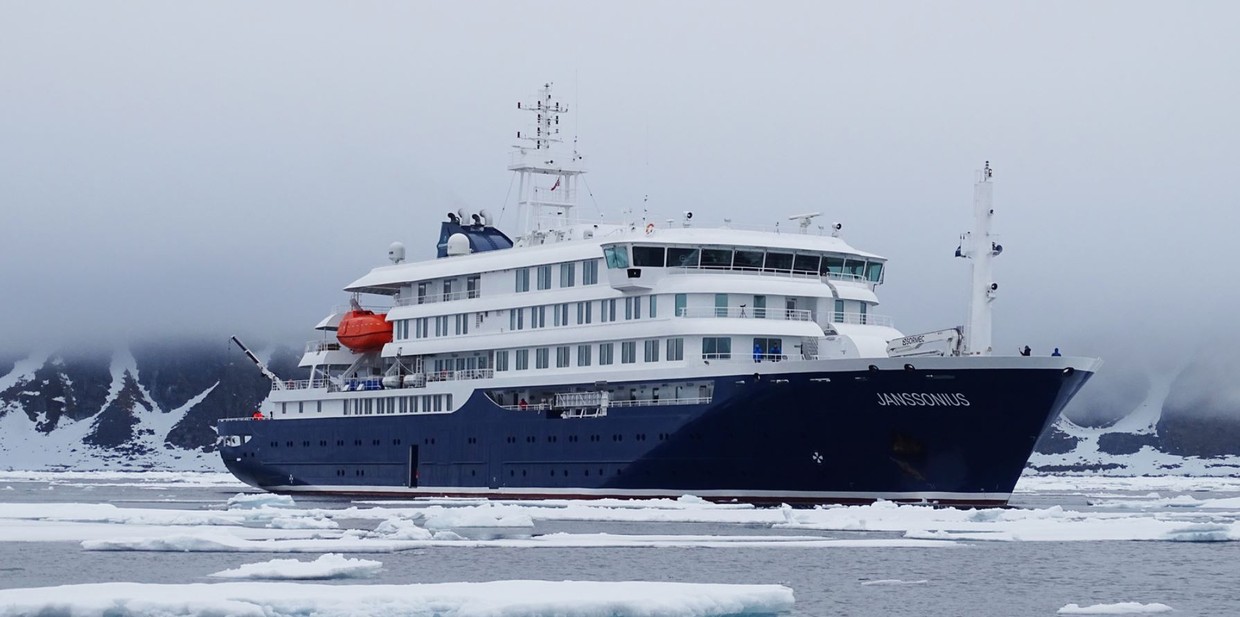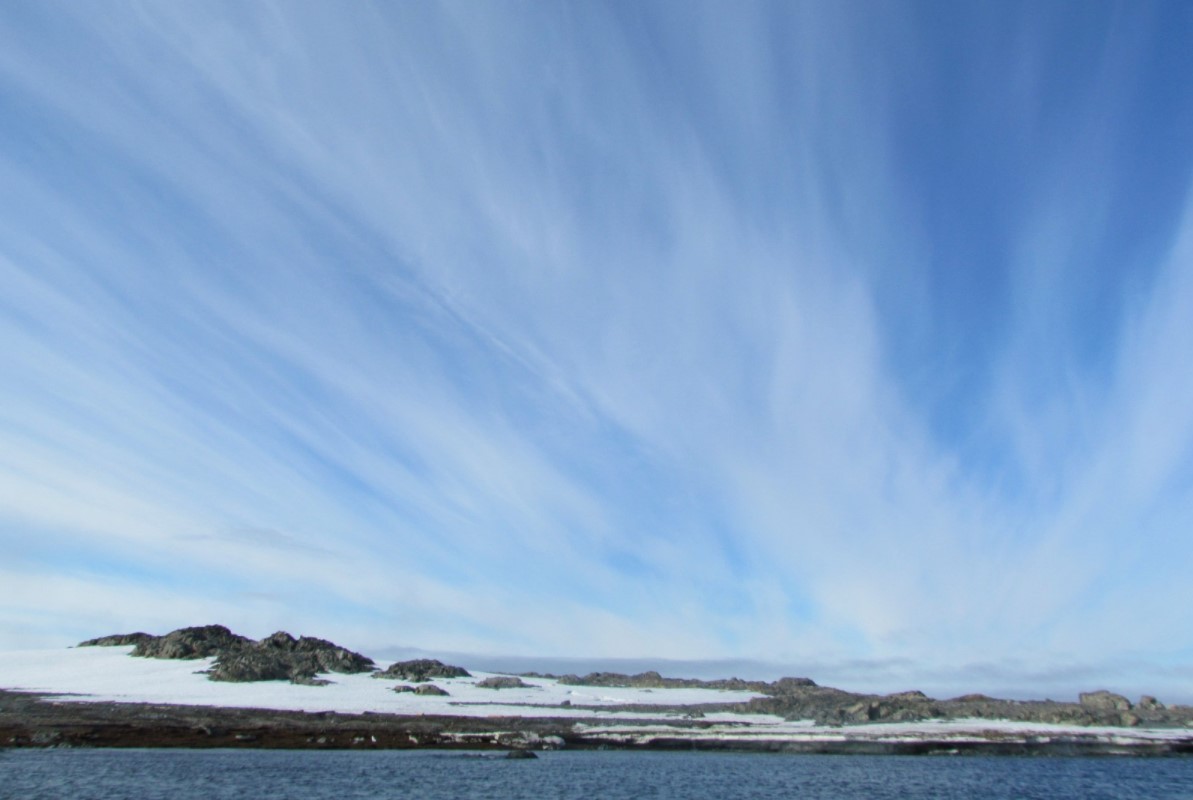from$ 7238 AUD
Note: Current p/p indicative rate. Final price may change due to currency fluctuations.
Janssonius
Longyearbyen to Longyearbyen
Overview
Join our expedition to the north of Svalbard to take in the lovely landscapes and wonderful wildlife. We will attempt to land on Kvitøya, a site of historical significance, and home of a large walrus population.
Departures
Cruise Itinerary
You touch down in Longyearbyen, the administrative center of Spitsbergen, the largest island of the Svalbard archipelago. Enjoy strolling around this former mining town, whose parish church and Svalbard Museum make for fascinating attractions. Though the countryside appears stark, more than a hundred species of plant have been recorded in it. In the early evening the ship sails out of Isfjorden, where you might spot the first minke whale of your voyage.
Sailing to Raudfjorden, on the north coast of Spitsbergen, you take in an expansive fjord spilling with glaciers – and maybe even visited by ringed and bearded seals. The cliffs and shoreline of this fjord also support thriving seabird colonies, rich vegetation, and the possibility of polar bears. In the evening you sail by the island of Moffen, where you can find a large herd of walruses.
You next sail through Beverleysundet, formerly navigated by the Swedish-Russian Arc-of-Meridian Expedition in 1898. From here you push east along Scoresby Island into Rijpfjord, where the German Wehrmacht operated the weather station Haudegen (now off-limits) until September 1945. The aim in Zorgdragerfjord is to have one group walk the eastern shore while another walks the north side of Arkvatnet, through Havsuldalen to the entrance of Duvefjorden.
Pushing east to Nordaustlandet, you reach the area where the Italian captain Sora tried to rescue the Nobile Expedition in 1928. The focus here is the great glacier front of Schweigaardbreen, though you may also land at Firkantbukta, getting the chance to gain some altitude and take a few higher- elevation photos. Alternately we sail to Behounekodden (the telegraphist of Nobile) and Soraberget.
Today you try to reach the rarely visited Kvitøya, far to the east and close to Russian territory. The enormous ice cap covering this island leaves only a small area bare. You land at the western tip of Andréeneset, where the Swedish explorer S. A. Andrée and his companions perished in 1897. Another objective for the day is Kræmerpynten at the far east of the island, where a sizable group of walruses resides.
We sail due North toward the North Pole and if sea ice allows, we expect to reach your northernmost point, at the 82nd parallel. While retracing your route southwest, keep watch for polar bears and elusive Greenland (bowhead) whales and a very rare narwal. This is the time of year when we have seen Ross’s gulls in the area.
In the Seven Islands at Rossøya we could land at the northernmost land in Spitsbergen. On Vesle Tavleøya we can see the marks of the Swedishe-Russian Arc of Meridian Expedition (1899). On Phippsøya we usually meet a flock of walruses. Polar bears inhabit this region, so the ship may park for several hours among the pack ice before wheeling around west again.
Today we sail into Krossfjorden in the main island of Spitsbergen, where you’ll pass through staggeringly scenic alpine mountaintops, active glaciers, and rich vegetation.
Every adventure, no matter how grand, must eventually come to an end. You disembark in Longyearbyen, taking home memories that will accompany you wherever your next adventure lies.
All itineraries are for guidance only. Programs may vary depending on ice, weather, and wildlife conditions. Landings are subject to site availabilities, permissions, and environmental concerns per AECO regulations. Official sailing plans and landing slots are scheduled with AECO prior to the start of the season, but the expedition leader determines the final plan. Flexibility is paramount for expedition cruises. The average cruising speed of our vessel is 10.5 knots.
Janssonius

Vessel Type: Polar Class 6 Cruise Ship Length: 107.6 metres Passenger Capacity: 170 in 80 cabins Built: 2019/2020 Happier polar passengers, healthier polar environment Not only will the numerous amenities and on-board entertainments help make your Janssonius voyage truly memorable, this ship also gives you the peace of mind that comes with choosing one of the most environmentally friendly vessel on the polar seas. Janssonius uses LED lighting, steam heating, bio-degradable paints and lubricants, and state-of-the-art power management systems that keep fuel consumption and CO2 levels minimal. This means that when you sail aboard Janssonius, you get to enjoy the exotic landscapes and wildlife as much as possible while impacting them as little as possible. Hotel comfort, expedition class Janssonius offers high-quality accommodation for 170 passengers in six grand suites with balconies (27 square meters, 291 square feet), eight junior suites (19 to 20 square meters, 205 to 215 square feet), eight superior cabins (20 to 21 square meters, 215 to 226 square feet), 11 twin deluxe cabins, (19 to 21 square meters, 205 to 226 square feet), 14 twin window cabins (12 to 14 square meters, 129 to 151 square feet) as well as 27 twin porthole cabins, two triple porthole cabins, and four quadruple porthole cabins that vary in size from 12 to 18 square meters, or 129 to 194 square feet. The passenger capacity certificate for Janssonius is 196 persons. One deck consists of a large observation lounge and separate lecture room, which are reserved for a wide variety of interactive workshops, exhibitions, and performances particular to Janssonius. Though elegantly designed in stylish mid-century modern décor, this vessel holds true to Oceanwide’s distinctive cozy and informal atmosphere. Swift & safe ship-to-shore operations It is our philosophy to keep sea time short so that we can focus instead on fast, effective access to shore and near-shore activities. To give you the maximum contact with the nature and wildlife you traveled so far to see, we employ a tough fleet of rigid-hull inflatable Zodiac boats that guarantee swift and safe landing operations for the passengers. Janssonius has two separate gangways and a sheltered indoor Zodiac embarkation platform that can also be used for special outdoor activities, such as kayaking. The fast, flexible, friendly heart of the polar regions Our top priority is taking advantage of every wildlife and terrain opportunity as it occurs. To keep our itineraries flexible itineraries and our response time rapid, Janssonius is equipped with advanced stabilizers and two main engines capable of powering the vessel up to 15 knots. But Janssonius sacrifices no warmth to achieve its keen polar edge: You will have 72 crew and staff members (including expedition and hotel staff) at your service while on board, ensuring that what little time you do spend on the ship you will spend comfortably entertained.
Highlights
• Zodiac Cruising & Shore Program • Shore-Based Walking • Kvitøya • Bowhead Whale • Polar Bear • Walrus • Bearded Seal • Ringed Seal
Map



